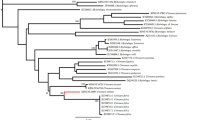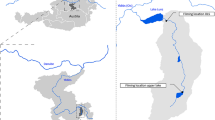Abstract
IN the well-known associations between hermit crabs and sea anemones, the crab is generally assumed to play an active part in establishing and maintaining the relationship. This has been demonstrated for Adamsia palliata, and Eupagurus prideauxi 1, for Calliactis parasitica, and Pagurus arrosor 2,3 and for C. parasitica, and P. striatus 1,4. From this it might be expected that the large hermit crab of British waters, Eupagurus bernhardus, also actively assists the settlement of C. parasitica on its shells. Brief comments in a note by Brightwell5 and a review by Davenport6 suggest, however, that these authors never observed such behaviour in E. bernhardus since they both state that the belief that this crab places anemones on its shells requires verification.
Similar content being viewed by others
References
Faurot, L., Arch. Zool. Exp. Gen., 5, 421 (1910).
Brunelli, G., Zool. Jb., 34, 1 (1913).
Brock, F., Arch. Entw Mech. Org., 112, 204 (1927).
Faurot, L., Arch. Zool. Exp. Gen., 74, 139 (1932).
Brightwell, L. R., Proc. Zool. Soc. (Lond.), 123, 806 (1953).
Davenport, D., Quart. Rev. Biol., 30, 29 (1955).
Author information
Authors and Affiliations
Rights and permissions
About this article
Cite this article
ROSS, D. The Sea Anemone (Calliactis parasitica) and the Hermit Crab (Eupagurus bernhardus). Nature 184, 1161–1162 (1959). https://doi.org/10.1038/1841161a0
Issue Date:
DOI: https://doi.org/10.1038/1841161a0
- Springer Nature Limited
This article is cited by
-
The partnerships between hermit crabs and sea anemones: an overview
Symbiosis (2024)





